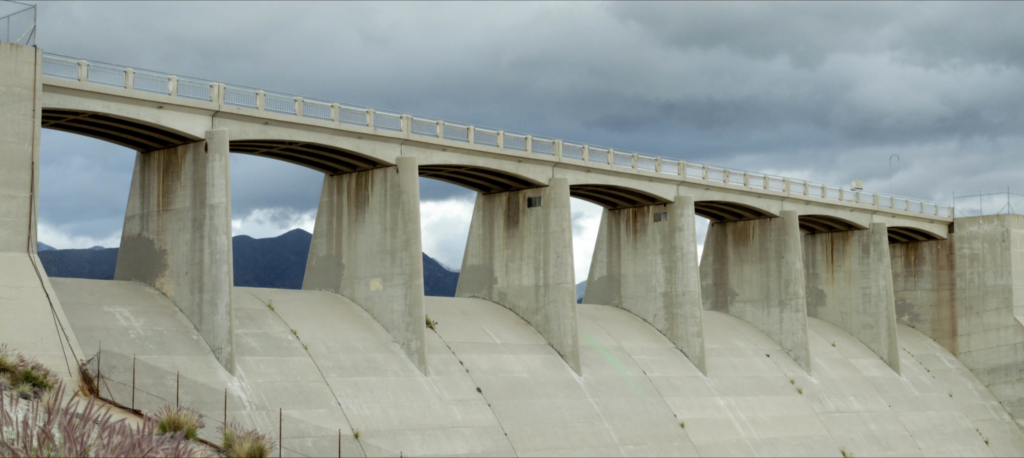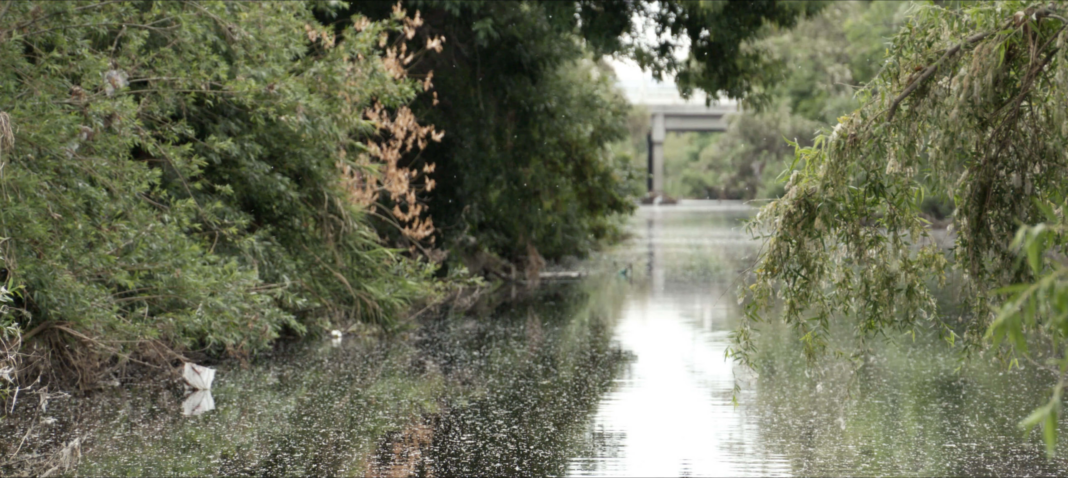The interdisciplinary artist turned her video camera on the L.A. River for a documentary that highlights the interconnected ecologies of the often-maligned and misunderstood body of water.
“Works in Progress” highlights artists across a range of disciplines whose work deals with ecological themes. Considering the particular role that artists play in the climate movement, this column shares their voices and provides a glimpse behind the curtain into their creative processes and experiences. Through a combination of Q&As and narrative pieces, this column discusses the relationship between the natural world, advocacy, and the art itself.
Kerry Tribe is a Los Angeles-based interdisciplinary artist who works in film, video, and mixed media. Her 2016 documentary “Exquisite Corpse” traces the 51-mile length of the Los Angeles River through vignettes about the communities and ecological phenomena that coexist with it. Tribe leads us through riverside neighborhoods, a wastewater treatment plant, and homeless encampments while introducing us to ranchers, skateboarders, a school band, and a mariachi guitarist, among many others.
The film captures the mingling of the river’s past and present. As one interviewee says while the camera pans a pile of discarded shopping carts and fallen trees, “I think a lot of stuff has happened in that riverbed. You can feel it in your bones.”
Bluedot’s Lily Olsen spoke with Tribe about the process of making the documentary and what she hopes viewers get from watching it.
Lily Olsen: Before making the film, what were your experiences with the L.A. River? I know a lot of Angelenos forget that the L.A. River exists and feel like it doesn’t shape our daily lives. But as the film shows, it definitely does.
Kerry Tribe: I knew very little about the L.A. River before making this film. People seemed to think of it mainly as a storm drain system built to deal with run off. Which is part of the story, for sure. But in the early 2000s, I had a studio near one of the lush sections, which was impossible to miss. In the parts where the river has a natural bottom, it’s like a stretch of jungle running through the city: green year-round, full of birds and insects and people fishing.

LO: Tell me a little bit about the research you did for the film.
KT: Parts of the river aren’t easy to access, but a lot of it is flanked with paths that can be walked or biked, and I did both. I toured a few miles by kayak, a few more by drone. I knocked on a lot of doors and called a lot of businesses. I especially loved exploring the wilder natural parts, where people and animals and plants and weather patterns would make themselves known. It was very Zen.
LO: How did you select the people and communities you featured in the film?
KT: It felt to me as if the subjects chose themselves. The premise was to show the entire 51 miles of the L.A. River, starting as it does on a map at the convergence of two creeks in the San Fernando Valley and flowing, shot by shot, vignette by vignette, along the river its entire length until arriving at the Pacific Ocean, 51 minutes later.
LO: And how did you decide what to focus on in the film?
People like to scoff at the idea that this mostly concrete channel counts as a river. But after a heavy rain, go anywhere along its length and you’ll see first hand the river’s force.
KT: I shot and edited intermittently over several months, working from a 50-foot-long collaged “shooting script” that took over my studio floor: a collaged map of the river, stitched together from Google Earth shots printed at the same scale. As the project developed, I could start to see where in the timeline I needed more, where we had too much, and what I had covered a lot of already. That would determine what we’d focus on next.
LO: Could you tell me a bit about the title, “Exquisite Corpse”? To what extent do you see the river as dead? There seems to be life running through it in the film, a kind of resilience, even in the midst of pollution and concrete.
KT: Yes, this “corpse” of a river is teeming with life, wherever you look. And that is exquisite! I was also thinking about a drawing game I loved (still love!), which the Surrealists called “Exquisite Corpse.” One person draws a head at the top of the page, folds the paper under, passes it to a friend for the torso, who then passes it again for the legs. In the end you have this marvelous portrait made by a chance meeting of many different parts.
LO: What do you wish people knew about the L.A. River?
KT: People like to scoff at the idea that this mostly concrete channel counts as a river. But after a heavy rain, go anywhere along its length and you’ll see firsthand the river’s force. And if you have the good fortune to spend any time in the few stretches where concrete doesn’t line the bottom, you’ll see an ecology that’s thriving, with herons, egrets, and coots. The waters there are home to catfish, carp, and large-mouth bass, and the islands host all kinds of native and exotic plants — to say nothing of the river’s human inhabitants.
LO: What does this film say about the relationship between humans and natural ecosystems in L.A. more broadly?
KT: I think the film reflects our contingent and connected relationship with the natural world.


